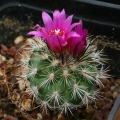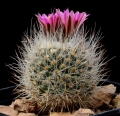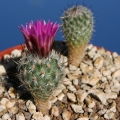Donate now to support the LLIFLE projects.
Your support is critical to our success.
Your support is critical to our success.
Accepted Scientific Name: Turbinicarpus mandragora subs. booleanus (G.S.Hinton) Lüthy
Kakteen Sukk. 50(11): 279 (1999)
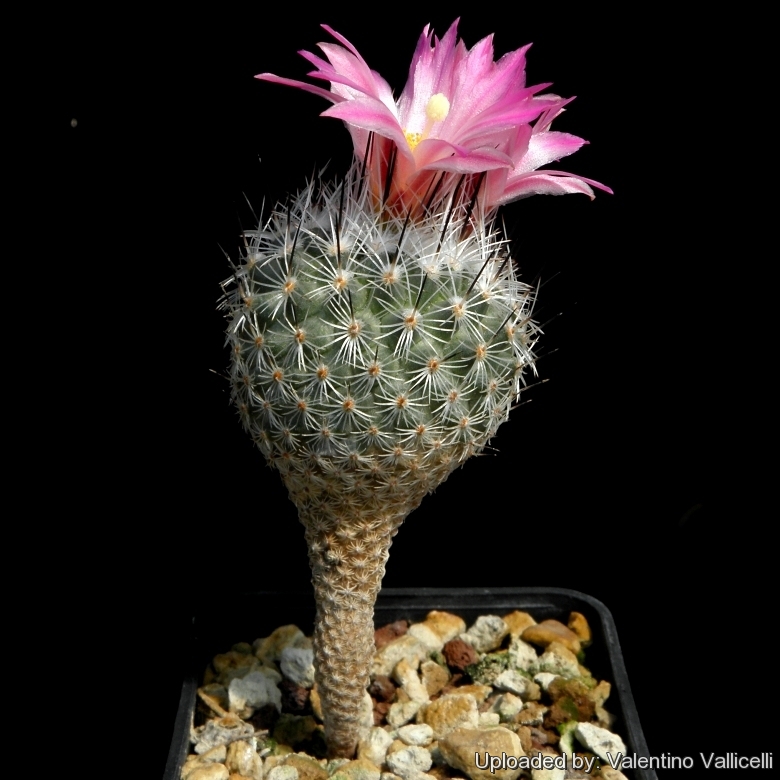
Neolloydia booleana (Turbinicarpus mandragora subs. booleanus) Photo by: Valentino Vallicelli
Synonyms:
- Turbinicarpus mandragora subs. booleanus (G.S.Hinton) Lüthy
- Neolloydia booleana (G.S.Hinton) Doweld
- Rapicactus booleanus (G.S.Hinton) D.Donati
- Rapicactus subterraneus subs. booleanus (G.S.Hinton) Lüthy
- Turbinicarpus booleanus G.S.Hinton
- Turbinicarpus subterraneus subs. booleanus (G.S.Hinton) M.Zachar
- Turbinicarpus subterraneus subs. booleanus (G.S.Hinton) D.R.Hunt
- Turbinicarpus subterraneus var. booleanus (G.S.Hinton) D.R.Hunt
See all synonyms of Turbinicarpus mandragora
back
Accepted name in llifle Database:Turbinicarpus mandragora (Frič ex A.Berger) A.D.Zimmerman
Bradleya 9: 92. 1991
Synonymy: 8
- Turbinicarpus mandragora (Frič ex A.Berger) A.D.Zimmerman
- Echinocactus mandragora Frič ex A.Berger
- Gymnocactus mandragora (Frič ex A.Berger) Backeb.
- Lodia mandragora (Frič ex A.Berger) Mosco & Zanov.
- Neolloydia mandragora (Frič ex A.Berger) E.F.Anderson
- Pediocactus mandragora (Frič ex A.Berger) Halda
- Rapicactus mandragora (Frič ex A.Berger) Buxb. & Oehme
- Thelocactus mandragora A.Berger
Turbinicarpus mandragora subs. beguinii (N.P.Taylor) Lüthy
Kakteen Sukk. 50(11): 279 (1999)
Synonymy: 17
- Turbinicarpus mandragora subs. beguinii (N.P.Taylor) Lüthy
- Echinocactus beguinii F.A.C.Weber ex K.Schum.
- Gymnocactus beguinii (F.A.C.Weber ex K.Schum.) Backeb.
- Mammillaria beguinii (F.A.C.Weber ex K.Schum.) hort.
- Neolloydia beguinii (F.A.C.Weber ex K.Schum.) Britton & Rose
- Neolloydia glassii Doweld
- Neolloydia smithii var. beguinii (F.A.C.Weber) Kladiwa & Fittkau in Krainz
- Rapicactus beguinii (N.P.Taylor) Lüthy
- Thelocactus beguinii N.P.Taylor
- Turbinicarpus beguinii (N.P.Taylor) Mosco & Zanov.
- Turbinicarpus beguinii subs. albiflorus
- Turbinicarpus beguinii subs. haenkeanus Halda, Horáček & Malina
- Turbinicarpus beguinii subs. hintoniorum A.Hofer
- Neolloydia glassii var. hintoniorum (A.Hofer) Doweld
- Rapicactus beguinii subs. hintoniorum (A.Hofer) Lüthy
- Turbinicarpus beguinii subs. senilis M.Zachar & Lux
Turbinicarpus mandragora subs. booleanus (G.S.Hinton) Lüthy
Kakteen Sukk. 50(11): 279 (1999)
Synonymy: 8
- Turbinicarpus mandragora subs. booleanus (G.S.Hinton) Lüthy
- Neolloydia booleana (G.S.Hinton) Doweld
- Rapicactus booleanus (G.S.Hinton) D.Donati
- Rapicactus subterraneus subs. booleanus (G.S.Hinton) Lüthy
- Turbinicarpus booleanus G.S.Hinton
- Turbinicarpus subterraneus subs. booleanus (G.S.Hinton) M.Zachar
- Turbinicarpus subterraneus subs. booleanus (G.S.Hinton) D.R.Hunt
- Turbinicarpus subterraneus var. booleanus (G.S.Hinton) D.R.Hunt
Turbinicarpus mandragora subs. pailanus (Halda & Panar.) Lüthy
Kakteen Sukk. 50(11): 279 (1999)
Synonymy: 6
- Turbinicarpus mandragora subs. pailanus (Halda & Panar.) Lüthy
- Neolloydia pailana (Halda & Panar.) Doweld
- Rapicactus mandragora subs. pailanus var. mandragora (Halda & Panar.) Lüthy
- Rapicactus pailanus (Halda & Panar.) D.Donati
- Turbinicarpus beguinii subs. pailanus (Halda & Panar.) U.Guzmán
- Turbinicarpus pailanus Halda & Panar.
Turbinicarpus mandragora subs. subterraneus (Backeb.) Lüthy
Kakteen Sukk. 50(11): 279 (1999)
Synonymy: 8
- Turbinicarpus mandragora subs. subterraneus (Backeb.) Lüthy
- Echinocactus subterraneus Backeb.
- Gymnocactus subterraneus (Backeb.) Backeb. ex Fritz Schwarz
- Neolloydia subterranea (Backeb.) H.E.Moore
- Pediocactus subterraneus (Backeb.) Halda
- Rapicactus subterraneus (Backeb.) Buxb. & Oehme
- Thelocactus subterraneus Backeb.
- Turbinicarpus subterraneus (Backeb.) A.D.Zimmerman
Turbinicarpus mandragora subs. zaragosae (Glass & R.A.Foster) Lüthy
Kakteen Sukk. 50(11): 279. 1999
Synonymy: 13
- Turbinicarpus mandragora subs. zaragosae (Glass & R.A.Foster) Lüthy
- Gymnocactus subterraneus var. zaragosae Glass & R.A.Foster
- Neolloydia subterranea subs. zaragosae (Glass & R.A.Foster) Doweld
- Neolloydia subterranea var. zaragosae (Glass & R.A.Foster) E.F.Anderson
- Neolloydia zaragosae (Glass & R.A.Foster) Doweld
- Pediocactus subterraneus var. zaragosae (Glass & R.A.Foster) Halda
- Rapicactus subterraneus subs. zaragosae (Glass & R.A.Foster) Lüthy
- Rapicactus zaragosae (Glass & R.A.Foster) D.Donati
- Thelocactus subterraneus var. zaragosae (Glass & R.A.Foster) Bravo
- Turbinicarpus beguinii subs. zaragosae (Glass & R.A.Foster) D.R.Hunt
- Turbinicarpus subterraneus subs. zaragosae (Glass & R.A.Foster) M.Zachar
- Turbinicarpus subterraneus var. zaragosae (Glass & R.A.Foster) A.D.Zimmerman
- Turbinicarpus zaragosae (Glass & R.A.Foster) Glass & A.Hofer
back

Neolloydia booleana (Turbinicarpus mandragora subs. booleanus) Photo by: Valentino Vallicelli
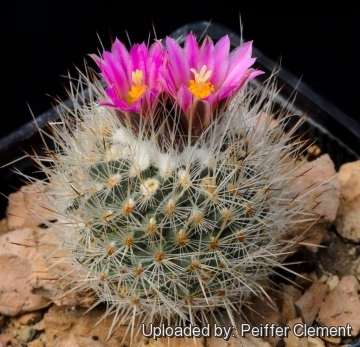
Neolloydia booleana (Turbinicarpus mandragora subs. booleanus) Photo by: Peiffer Clement
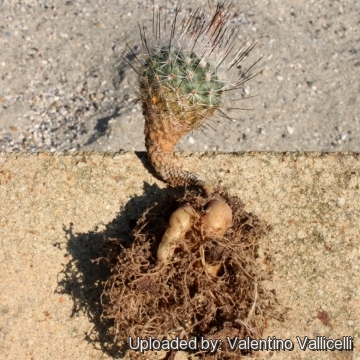
Neolloydia booleana (Turbinicarpus mandragora subs. booleanus) Photo by: Valentino Vallicelli
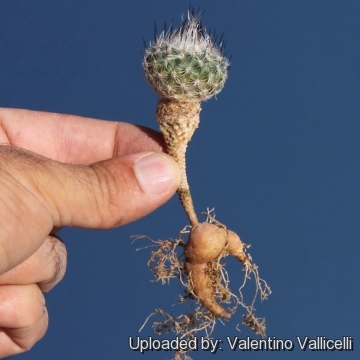
Neolloydia booleana (Turbinicarpus mandragora subs. booleanus) Photo by: Valentino Vallicelli
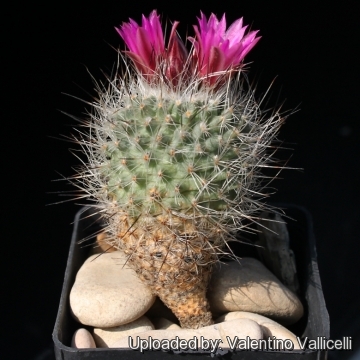
Neolloydia booleana (Turbinicarpus mandragora subs. booleanus) Photo by: Valentino Vallicelli
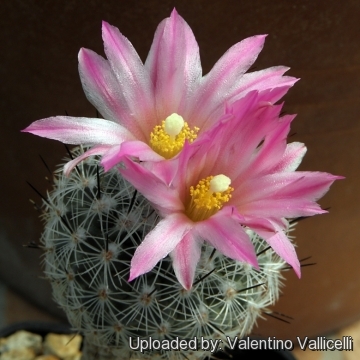
Neolloydia booleana (Turbinicarpus mandragora subs. booleanus) Photo by: Valentino Vallicelli
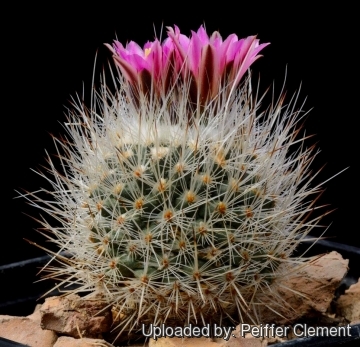
Neolloydia booleana (Turbinicarpus mandragora subs. booleanus) Photo by: Peiffer Clement
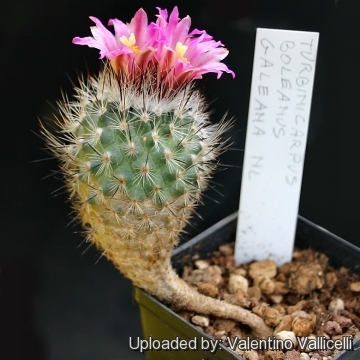
Neolloydia booleana (Turbinicarpus mandragora subs. booleanus) Photo by: Valentino Vallicelli
| Your Actions | |
|---|---|
| Back to Neolloydia index | |
| Back to Cactaceae index | |
 |
Back to Cacti Encyclopedia index |









